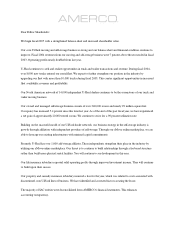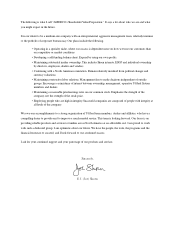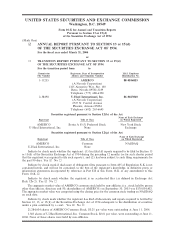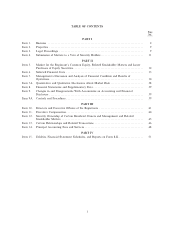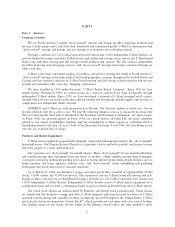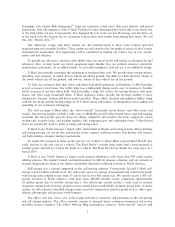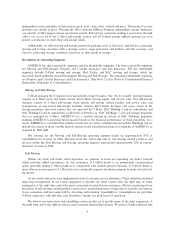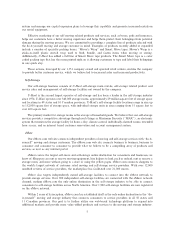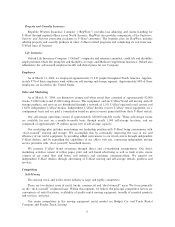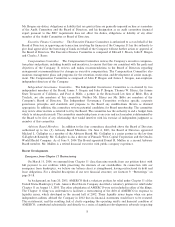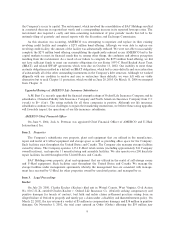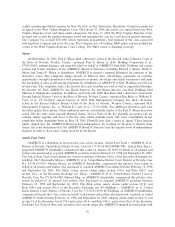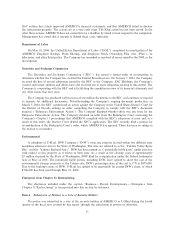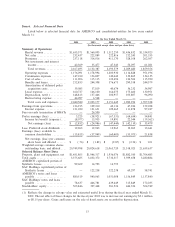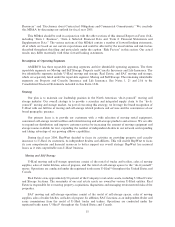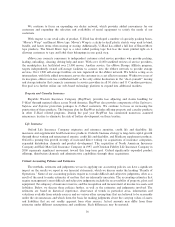U-Haul 2004 Annual Report Download - page 12
Download and view the complete annual report
Please find page 12 of the 2004 U-Haul annual report below. You can navigate through the pages in the report by either clicking on the pages listed below, or by using the keyword search tool below to find specific information within the annual report.Self-Storage
The self-storage market is large and highly fragmented.
We believe the principal competitive factors in this industry are convenience of storage rental locations,
cleanliness, security and price.
Our primary competitors in the self-storage market are Public Storage, Shurgard, Storage USA and
others.
Insurance
The highly competitive insurance industry includes a large number of life insurance companies and
property and casualty insurance companies. In addition, the marketplace now includes Ñnancial services Ñrms
oÅering both insurance and Ñnancial products. Some of the insurance companies are owned by stockholders
and others are owned by policyholders. Many competitors have been in business for a longer period of time or
possess substantially greater Ñnancial resources and broader product portfolios. We compete in the insurance
business based upon price, product design, and services rendered to producers and policyholders.
Corporate Governance
Corporate governance is typically deÑned as the system that allocates duties and authority among a
company's stockholders, board of directors and management. The stockholders elect the board and vote on
extraordinary matters; the board is the company's governing body; and management runs the day-to-day
operations of the company.
Our current Board members are William E. Carty, John M. Dodds, Charles J. Bayer, John P. Brogan,
James J. Grogan, M. Frank Lyons, James P. Shoen and Edward J. Shoen.
Board Responsibilities and Structure
The primary responsibilities of the Board of Directors are oversight, counseling and direction to the
management of the Company in the long-term interests of the Company and its stockholders.
The Board and its committees meet throughout the year on a set schedule, and also hold special meetings
and act by written consent from time to time as needed. The Board has delegated various responsibilities and
authority to diÅerent Board committees as generally described below. Committees regularly report on their
activities and actions to the full Board.
Board Committees
The Board currently has Audit, Executive Finance, Compensation, and Independent Corporate Govern-
ance Committees, as well as an Advisory Board.
Audit Committee. The Audit Committee assists the Board of Directors in fulÑlling its oversight
responsibilities as to Ñnancial reporting and audit functions and risk management. The Audit Committee
monitors the Ñnancial information that is provided to stockholders and others, the independence and
performance of the Company's independent auditors and internal audit department and the systems of internal
control established by management and the Board.
In addition, the members of the Audit Committee of the Board each qualify as ""independent'' under
special standards developed by the Securities and Exchange Commission (SEC) for members of audit
committees, and the Audit Committee includes at least one member who is determined by the Board to meet
the qualiÑcations of an ""audit committee Ñnancial expert'' in accordance with SEC rules, including that the
person meets the relevant deÑnition of an ""independent'' director. Mr. John P. Brogan is the independent
director who has been determined to be an audit committee Ñnancial expert. Stockholders should understand
that this designation is a disclosure requirement of the SEC related to Mr. Brogan's experience and
understanding with respect to certain accounting and auditing matters. The designation does not impose on
7



